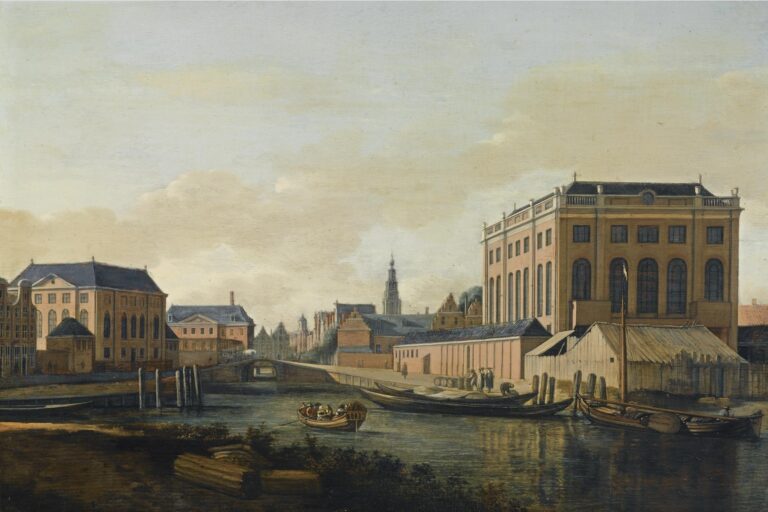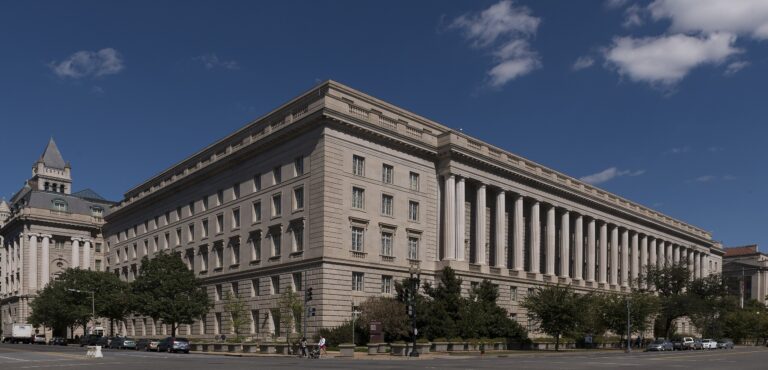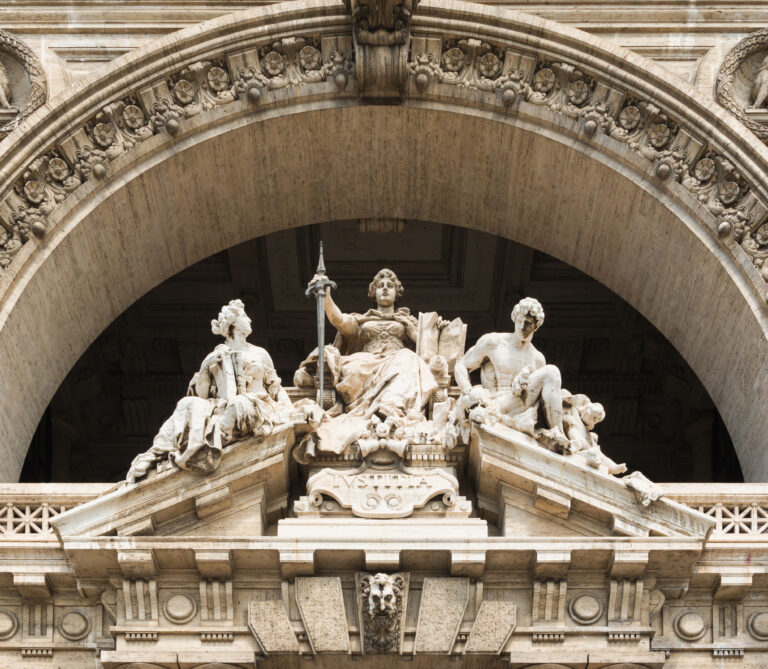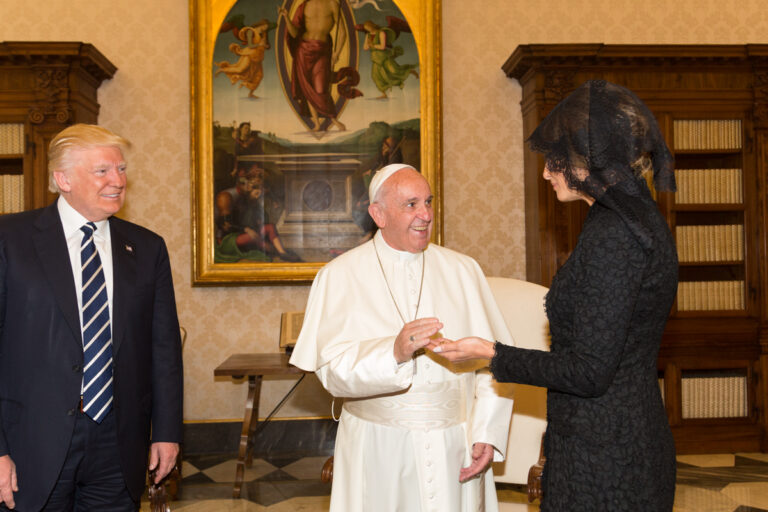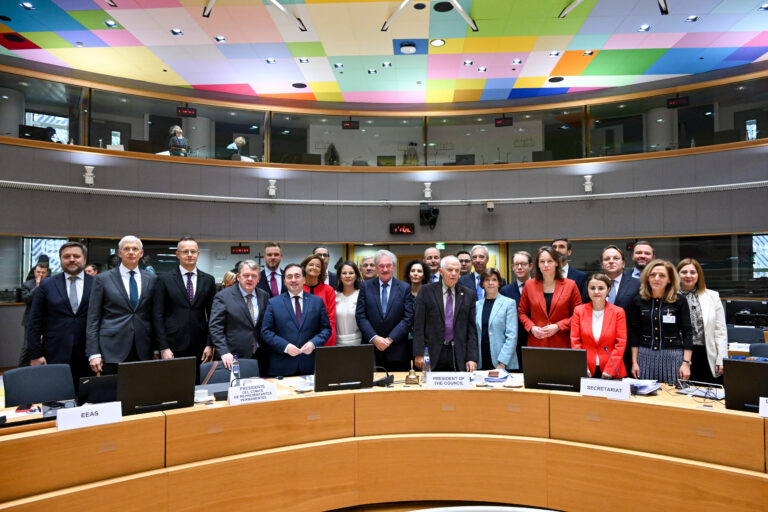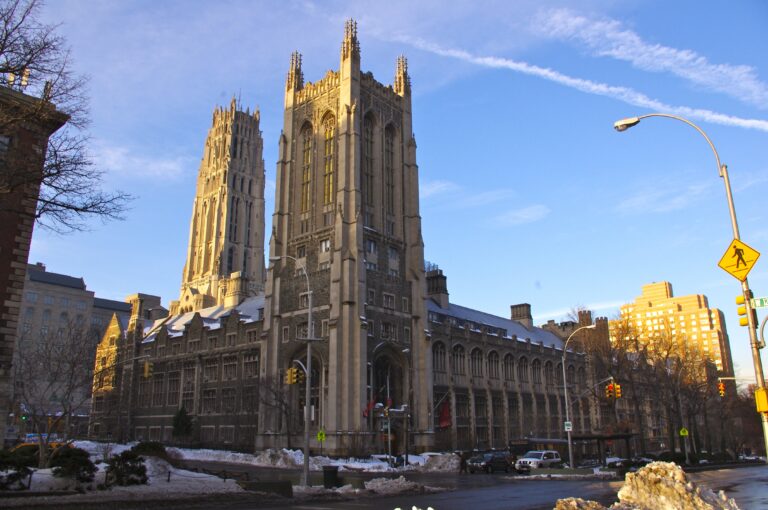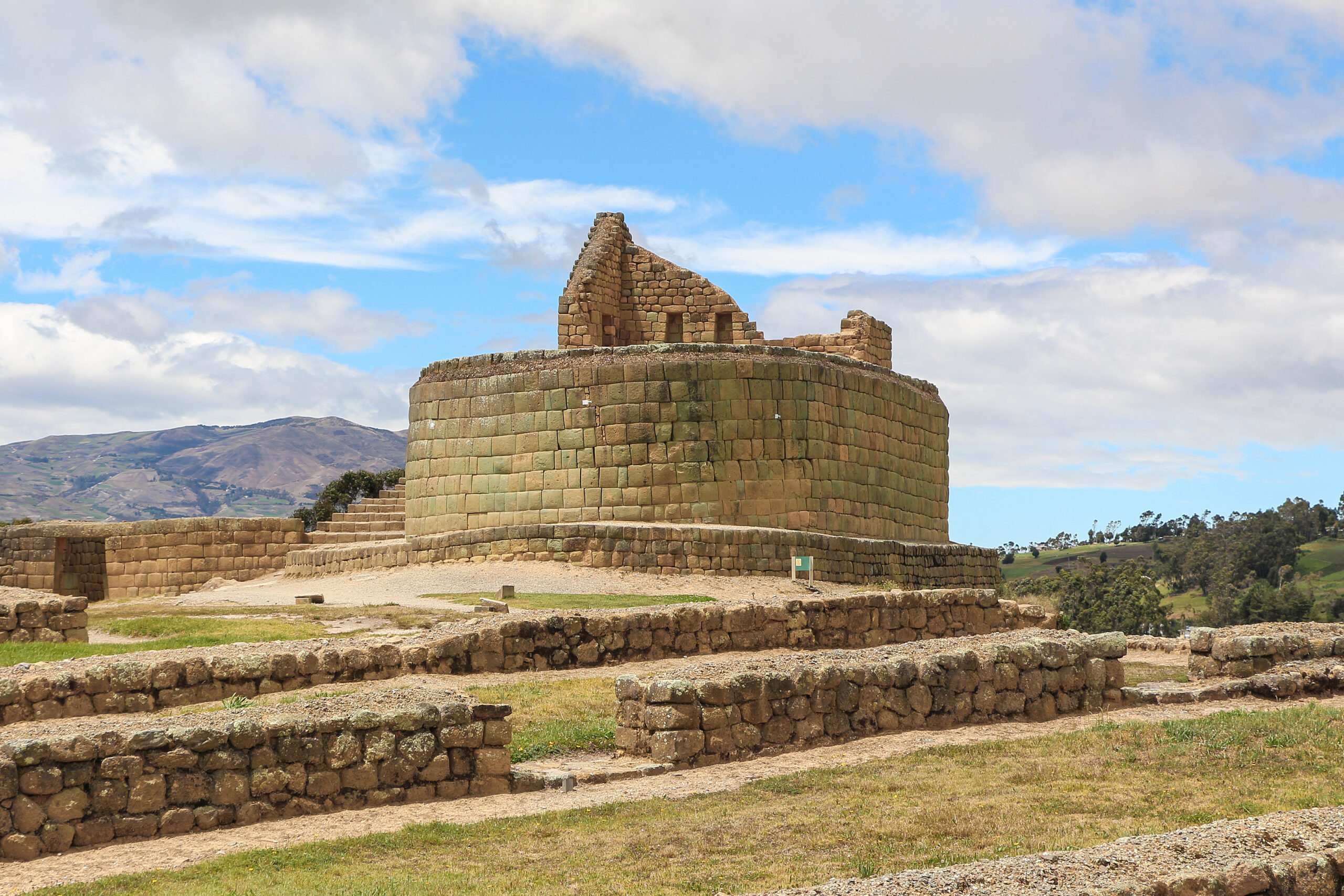
Freedom of Conscience and Religion in the Americas: Following OAS General Assembly Resolutions to Promote Pluralism and Strengthen Communities
Emily Cole
The “Temple of the Sun” of Ingapirca, Ecuador by Bernard Gagnon (CC BY-SA 3.0)
The following essay is reprinted and adapted on Canopy Forum in collaboration with the journal Derecho en Sociedad, a biannual electronic publication that is free and open access. Their issue 19(1) features full length articles in Spanish and English. Read Cole’s long-form essay on Freedom of Conscience and Religion in the Americas here. See other essays in this series here.
As Latin America and the Caribbean face increasing challenges related to freedom of religion or belief (FoRB) and conscience, the region’s approach to promoting and protecting its bundled nature must evolve. Attacks on places of worship and religious or cultural sites are damaging anywhere, and this is certainly true in the Western Hemisphere. Desecration of sacred sites or hostilities towards places of worship, and their leaders, threaten not only the rights of individuals but also the cultural fabric of entire communities.
To address these threats and build a stronger foundation for freedom of conscience and belief, the Organization of American States (OAS) must refocus its efforts on General Assembly Resolution XXVI, which emphasizes protection of these sites through new or strengthened mechanisms, specifically, through use of public policies aimed at promoting and protecting religious pluralism, respect, and tolerance. By prioritizing this resolution, OAS member states can take meaningful steps to ensure FoRB’s multifaceted nature is not only enshrined in law but also respected in practice throughout the Americas.
Certainly, the region faces a range of pressing issues, including rising crime and violence, foreign influences through the Venezuelan, Nicaraguan, and Cuban regimes, the ongoing crisis in Haiti, and complex foreign policy debates over ports, trade, and migration. But for the OAS, protecting places of worship should remain a top priority as it will strengthen both individual and collective rights and help protect the local community engagement necessary for constructive interfaith dialogue.
A Clear Directive from the 54th General Assembly
In its 54th General Assembly of OAS hosted in Asunción, Paraguay in June 2024, the OAS adopted important resolutions for the upcoming year. Of those, one resolves to “strengthening protection and promotion of the right to freedom of conscience and religion or belief” in the region. There, drafters reiterated the need to better promote and protect “religious pluralism, respect, and tolerance” in the hemisphere, encouraging member states to direct their attention to places of worship and sacred sites. Indeed, this focus understands that central to religious freedom is human dignity since, to fully affirm an individual’s humanity, their search for truth—in whatever peaceful form that takes shape—must be protected.
Places of worship, or physical spaces for religious practice, includes both buildings – like churches, mosques, or synagogues – and locations designated for spiritual or ritualistic activities. Similarly, sacred sites hold religious, spiritual, or cultural significance and include both man-made and natural sites or landmarks, as is the case for various indigenous communities. Cultural heritage is a broader concept that encompasses customs, traditions, and places of cultural and/or spiritual significance. Indeed, cultural heritage includes tangible and intangible elements as well as natural sites which are often integral to a community’s identity and preservation of tradition.
Given the essential role each of these play in the context of human rights, it is commendable that they were given attention at the 54th GA. Still, their promotion requires targeted action. To achieve this, the OAS might consider, broadly, cultural heritage protection as a framework for religious freedom promotion, appreciating the impact places of worship and sacred sites have on the vibrancy – and vitality – of their communities. As my Pepperdine colleague Emily Scolaro writes, “Challenges facing persecuted and minority faith communities in exercising their freedom to worship at ancient heritage sites with deep religious significance have only become more prominent,” making preservation of cultural heritage “a central component of protecting the human right to freedom of religion or belief.”
Resolution XXVI
General Assembly Resolution XXVI explicitly reaffirms a series of declarations related to places of worship and sacred sites in the Western Hemisphere:
- RECALLING Article 12 of the United Nations Declaration on the Rights of Indigenous Peoples that: “the right to maintain, protect, and have access in privacy to their religious and cultural sites”;
- RECOGNIZING that deliberate destruction of, or otherwise harmful actions against, places of worship and religious and cultural sites impede individuals’ abilities to worship and undermine the right to freedom of conscience and religion or belief; and
- REAFFIRMING that all human rights, including freedom of conscience, religion or belief, and freedom of expression are universal, indivisible, interdependent and interrelated and mutually reinforcing.
From there, areas of focus for 2025 are clear as the resolution resolves:
- To urge member states to end discrimination based on religion or belief, or non-belief, especially against persons belonging to marginalized or minority religious groups.
- To call upon member states to protect the ability to worship and other expressions of religion or belief, as well as all places of worship and sites of religious, cultural, and spiritual significance, so as to allow individuals to peacefully and safely practice and live out their religions or belief and observe religious, belief, faith, and spiritual traditions individually or in community with others.
- To encourage member states to develop and present reports on best practices to ensure the protection of places of worship and other sacred spaces, to include the religious and cultural sites of Indigenous peoples.
Ending discrimination based on religion or belief (or non-belief) is a bold request. While member states will not eradicate all forms of discrimination or hate against their minority faith communities this year, they can start by emphasizing the need for greater interfaith dialogue at local levels. Again, protecting places of worship and sacred sites provides a starting point for fostering these discussions.
Member states can also encourage their Ministers of Religious Affairs and other government officials or diplomats to convene with key religious leaders to discuss community challenges regarding safety and tolerance and ways they can support their efforts. With respect to education, a curriculum that emphasizes living in pluralistic societies is vital for elementary schools, high schools, and universities. Certainly, the nuances of freedom of conscience and conscientious objection is a ripe debate for the university setting across the Americas.
The General Assembly also determined to strengthen or develop “inclusive mechanisms” that protect and promote FoRB-focused public policies. Specifically:
To encourage member states to strengthen or to develop inclusive mechanismsto protect and promote freedom of conscience and religion or belief through public policies aimed at promoting and protecting religious pluralism, respect, and tolerance.
Yes, developing and presenting reports on best practices around protecting places of worship and sacred sites will require greater scholarship into the area of law and religion, but it will also hinge largely on access to religious communities. In this respect, member states can work with civil society organizations on the ground who are connected to faith leaders, since it is they who understand the complexities of their respective communities. Indeed, public policies cannot be implemented, let alone generated, without first engaging with the diverse faith communities that make up a given society.
Regarding other general efforts to help protect sacred sites and promote FoRB in Latin America and the Caribbean, key considerations might include: (1) reviewing policies and the interplay between international, domestic, and customary laws, including differentiating between doctrine, implementation, and enforcement; (2) understanding the legal mechanisms that already exist both at local and federal levels as well as within the Inter-American System; (3) examining precautionary measures requested before the Inter-American Commission on behalf of faith groups or religious communities (including indigenous communities) to determine if any violations implicated places of worship/sacred sites and what implementation, if any, followed the Commission’s recommendation(s). (See American Convention Art. 21; OAS Charter Art. 3(m), 45(a).)
Finally, the last point of Resolution XXVI is key:
To encourage member states, as well as the General Secretariat, to organize and participate in global, regional, and subregional conferences, where appropriate, and events that commemorate or promote respect for the right to freedom of conscience and religion or belief and to share any conclusions and best practices, discussed during these events.
Member states should inform the OAS General Secretariat of their desire for dialogues within its structure where these topics can be explored in greater detail, allowing religious freedom experts to facilitate. A 2025 OAS event modeled after the September 2023 “Dialogue in Support of Freedom of Conscience, Religion or Belief and Pluralism in the Americas” would be helpful. It could emphasize ways to protect places of worship and sacred sites in specific regional contexts—including the distinct challenges Caribbean nations face—and offer details into refining a cultural heritage framework to address those challenges.
Additionally, promoting interfaith dialogue gains support through the inclusion of civil society perspectives. The Interreligious Forum of the Americas (FIDELA) is one strong example of this. Similarly, attendance at annual platforms such as the G20 Interfaith Forum would also be positive. Finally, more Latin American and Caribbean countries joining the International Freedom of Religion or Belief Alliance (IRFBA) would afford development alongside other nations committed to the promotion of this right.
Religious and Cultural Sites of Indigenous Peoples
Notably, Resolution XXVI also resolves to develop and present reports on best practices to ensure the protection of places of worship and other sacred spaces including “the religious and cultural sites of indigenous peoples.” This means member states cannot simply acknowledge physical spiritual sites exist but also understand (at least generally) what these sites mean to those respective communities as it relates to FoRB. Importantly, this aspect of the resolution cannot come at a cost to, or be elevated to greater importance than, the rights of other faith communities, such as Christian, Jewish, Muslim, or Afro-Indigenous communities, who do not observe the land in the same way. One community’s FoRB right is not greater than another’s.
To better approach this part of the resolution, recognizing the connection between indigenous worldviews and ancestral lands is important. In other words, because indigenous ancestral lands are often inherently linked to spiritual and cultural practices, full enjoyment and exercise of the right to freedom of religion or belief often depend on their protection. Customary laws may provide insight into communal faith practices to help inform government interactions with these communities, especially those regarding forestry, mining, or other natural developments on their lands.
Indeed, our research at Pepperdine’s Program on Global Faith and Inclusive Societies has found the connection between land rights violations and FoRB cannot be overstated in Latin America. While territory is important in and of itself with respect to property rights, the ability to hold ceremonies and practice spiritual traditions in these communities often hinges on land or landmarks. Still, member states will have compelling interests regarding development on many of these territories.
In this respect, a difficult but necessary balancing act is inevitable regarding use of land for the development of a society and the collective rights of a particular people group. Nevertheless, when decisions have a direct effect on a fundamental right such as FoRB, those considerations should not be examined lightly.
Greater Emphasis on Protection of Places of Worship and Sacred Sites to Help Slow the Spread of Organized Crime
Organized crime exerts a profound impact on freedom of religion or belief (FoRB) in the region, though its influence is often underestimated due to its pervasive reach across citizen life. Multiple countries in Latin America and the Caribbean remain overwhelmed by violence which both disrupts community life and undermines government efforts to safeguard human rights, including FoRB. While this is especially true in Ecuador, Brazil, Colombia, and Mexico today, it is endemic to this part of the world. Indeed, with high rates of homicidal violence related to organized crime, the Americas have the highest regional homicide rate in the world.
Even so, the impact organized crime has on FoRB rights and specifically, on religious leaders is underappreciated, and the effect on community development or the ability for citizens to react to “unjust laws” or government impunity “from below” is greatly diminished. As the United Nations Plan of Action to Safeguard Religious Sites states, “Religious leaders play a crucial role in building trust, fostering dialogue, stressing unity, solidarity, and mutual understanding, and in offering positive and moderate narratives in response to hatred and division.” If places of worship are not protected, religious leaders become more vulnerable, and the community inevitably suffers.
In this way, a cultural heritage framework to FoRB (which reinforces the protection of places of worship and sacred sites) can foster community cohesion, reinforce the rule of law, and promote social resilience, deterring gang violence. But this framework needs directed government measures to work. Such measures naturally benefit ethno-religious minorities as well who battle their own separate challenges alongside gang oppression. As Teresa Flores keenly observes, “The level of violence exercised by criminal groups […] affects entire communities and, on many occasions, causes massive, forced displacement […] particularly affect[ing] indigenous leaders defending ancestral territory, who are the targets of threats, assassinations, and even disappearances.”
Indeed, religious communities in Latin America and the Caribbean, particularly those that are predominantly Catholic or Protestant, may be less vulnerable to the impact of organized crime if (1) the social environment is reinforced by norms rooted in shared beliefs and (2) faith leaders are held out as key figures of advocacy and support for economic and humanitarian aid. In societies that are or becoming more pluralistic, especially in South America, ongoing public interfaith dialogues will reinforce a sense of shared humanity and help promote social cohesion, fostering peace and tolerance which, again, may reduce the ability for gangs to acquire or maintain footholds in certain areas. Places of worship can again be points of reference to begin these dialogues. In countries like Brazil, Peru, and Colombia where local resources are often exploited through illegal mining, drug trafficking, and extortion, emphasizing the value of cultural heritage sites may help limit, or perhaps deter, gang reach.
Conclusion
The protection of places of worship and sacred sites in Latin America and the Caribbean must be elevated as a central concern for OAS Member States in 2025. General Assembly Resolution XXVI provides a powerful starting point. By acting on this resolution and appreciating the framework of cultural heritage protection, OAS members can strengthen the broader human rights landscape. In an increasingly fragmented region, where communities face ongoing challenges, prioritizing the protection of sacred and cultural spaces reinforces a collective commitment to tolerance, peace, and the flourishing of human dignity. Member States should commit to ensuring that religious pluralism, freedom of conscience, and cultural heritage are upheld as foundational pillars of community life in the upcoming year. As a recent OAS General Secretariat Declaration noted:
“[R]eligious pluralism goes beyond religious diversity. This distinction emphasizes the fact that the recognition of the diversity of belief and spirituality must be translated into concrete actions and policies of inclusion, dialogue and articulation in broader instances. It is important to value the role of religion and spirituality in the construction of democracy and social well-being, together with States, religious leaders, faith-based organizations, civil society, social movements and international organizations.”
Importantly, incorporating mandates from Resolution XXVI into concrete policies will also help safeguard other human rights that depend upon, and are strengthened by, the protection of freedom of religion or belief and conscience. Indeed, protecting places of worship and sacred, spiritual, or cultural sites ultimately advances free thought and expression, freedom of movement and development as well as various facets of economic, social, and cultural rights. This alone should encourage member states to act. ♦

Emily Cole is a human rights lawyer focused on religious freedom advocacy and community development in Latin America and the Caribbean and currently serves as an analyst for Pepperdine University’s Program on Global Faith and Inclusive Societies in Washington DC. A former Fulbright scholar to Ecuador, Emily earned her J.D. from the University of Wisconsin Law School and her B.A. in Political Science and Spanish from Eastern University.
Recommended Citation
Cole, Emily. “Freedom of Conscience and Religion in the Americas: Following OAS General Assembly Resolutions to Promote Pluralism and Strengthen Communities.” Canopy Forum, February 19, 2025. https://canopyforum.org/2025/02/19/freedom-of-conscience-and-religion-in-the-americas-following-oas-general-assembly-resolutions-to-promote-pluralism-and-strengthen-communities/.
Recent Posts



